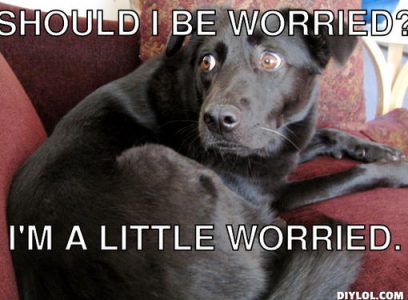In a blog about data and datafication, it might be important to ask.
What is data?
According to Wikipedia:
data … are individual facts, statis
tics, or items of information, often numeric, that are collected through observation. In a more technical sense, data are a set of values of qualitative or quantitative variables about one or more persons or objects…
In short, data is information that has been or is being processed into knowledge that we can study and use. The type of information varies widely. In a macro sense, the information we collect can be about people, places, or things. If we zoom in though, we can see that data is often unstructured. This is because specialists and machines collect data from many different sources. As a whole, however, this data can give organisations a clear image of who we are.
If we talk about people, it can tell us what a specific group of people feels or thinks relating about different topics. So, if we were to want to figure out how best to manoeuvre people’s beliefs into voting for one party or another, data about said group would be the best place to start. Hence, the Cambridge Analytica scandal.
However, data is not solely meant to manipulate. Data can also allow us to learn about our world. It can teach us the way groups of animals behave, or why the sky looks blue to the naked eye. It can even help us cure diseases or find ways to avert them. Thus, data is everywhere, and what academics, scientists, afficionados, etc. do is collect, process, and analyse it.
And Big Data?
Big Data is the area of data studies that systematically extracts and analyses big sets of data. In many cases, traditional software cannot process these data sets because they are too complex or large. As such, these data sets need specialised programs for us to collect and analyse them.
Big data also has a few other characteristics that differentiate it from other data:
- Variety: it is collected from many different sources and often unstructured.
- Velocity: Big Data is often available in real-time, so it’s produced and parsed in a continuous manner.
- Value: this relates to profitability or importance.
- Veracity: Big Data not only needs to be large, but also reliable. Otherwise, it is not useful.
- Variability: A lot of data collected in Big Data is raw. Therefore, we need to process it to transform it from unstructured to structured.
Other possible characteristics of Big Data are how exhaustive it is, or how it relates to other data. Its scalability is also important – since its size can vary rapidly. This is also the kind of data that companies and organisations collect from our social media use. Other sources are mobile phones, subscriptions, or tech gadgets. As such, it’s closely connected to the Internet of Things or IoT.
IoT are physical objects embedded with technologies that connect and exchange data. They share this data with other devices and systems over the Internet or other communication networks. So, IoT relate to the connectivity of things like mobile phones, and sensors. We can also find this connectivity in wireless and smart technology. This leads us to what exactly datafication is.
Datafi-what?
Datafication is the term often used for turning a lot of our information into data imbued with value. Thus, datafication is connected to:
- Human resources because data obtained through social media can help recruiters identify employees with favourable characteristics. That means that HR can brand certain people as bad hires, even before they post a job position. HR increasingly uses this data instead of personality tests because many people see it as more reliable.
- Risk profiling which relates to the way HR uses our data. However, banks also use it to assess the likelihood of loan payment.
- And customer relationship management, by customising a customer’s experience based on their behaviour. Companies assess this behaviour through the tone of customers’ emails, phone calls, and social media usage.
Specialists also sometimes use it in the logistics of city planning. For example, city planning experts can use sensors to track real-time data to re-route drivers away from a traffic jam.
So, companies use my information?
In short, yes. At least in some countries or contexts, we can expect for a group of actors to collect and analyse each one of our social behaviours in and with digital technology. Organisations then use this information in different ways that have a big impact in our lives. This means that datafication can h
ave both positive and negative uses.
When used in a beneficial way, it can help organisations figure out the best development implementations for each specific context. It can track pollution levels to help create or gauge environmental regulations. It can also help us understand what kind of aid might work best within a specific context. However, some groups also use
data in exploitative ways. Some actors use it to manipulate our emotions or truncate our work life. It can keep us from receiving help because organisations can brand us as a bad investment. Additionally, we cannot always rely on privacy and security – even with the growth of international and local standards and regulation.
Should I be worried?
As you can see, dear reader, data and its many uses are a tool. It’s definitely easy to understand why so many organisations use data in its various forms. However, like with other useful tools, some groups can easily mishandle it. This mishandling, can place anyone under unnecessary risk. This is why projects like the EU’s GDPR have specific clauses or articles like the right to be forgotten.
Nevertheless, GDPR is only one of very few instances of data regulation. In a lot of countries, our data remains unprotected. This is why organisations like EFF and La Quadrature du Net are so important. So, if you’re interested in finding out about your local digital freedom group, you might want to head to EDRI and check out their network. You can also head over to Access Now, and take a look at their work.
Last thing!
As I mentioned in my first post, I will soon have an interview with narrative writer and PhD student, Axel Hasen Taiari. I hope to interview him on Monday the 11th to talk about video games and their interactions with real-world ideas and expectations. So, if you have a question for him, please leave a comment below or email us your question to coffeeoverdata at gmail.com



